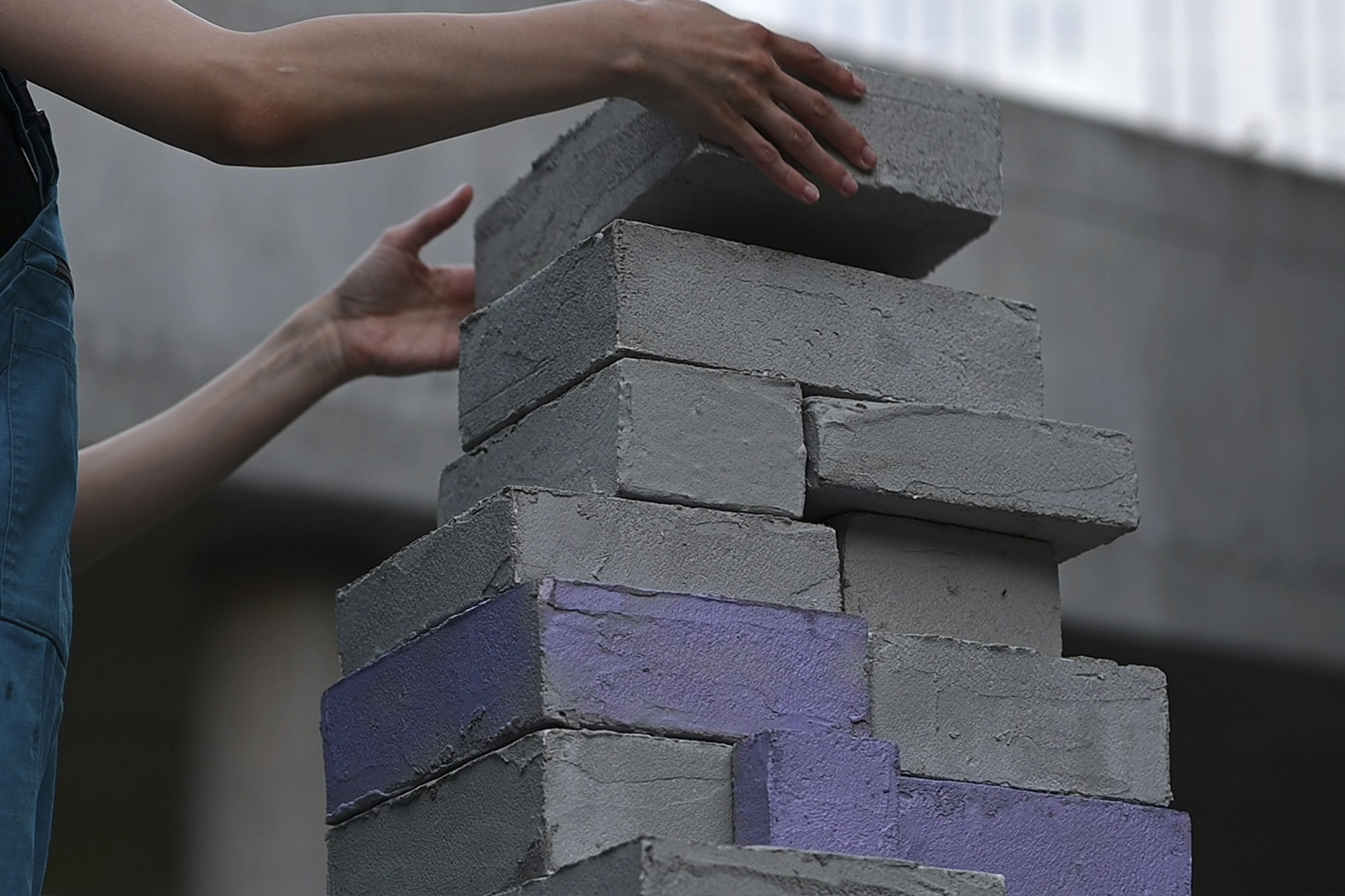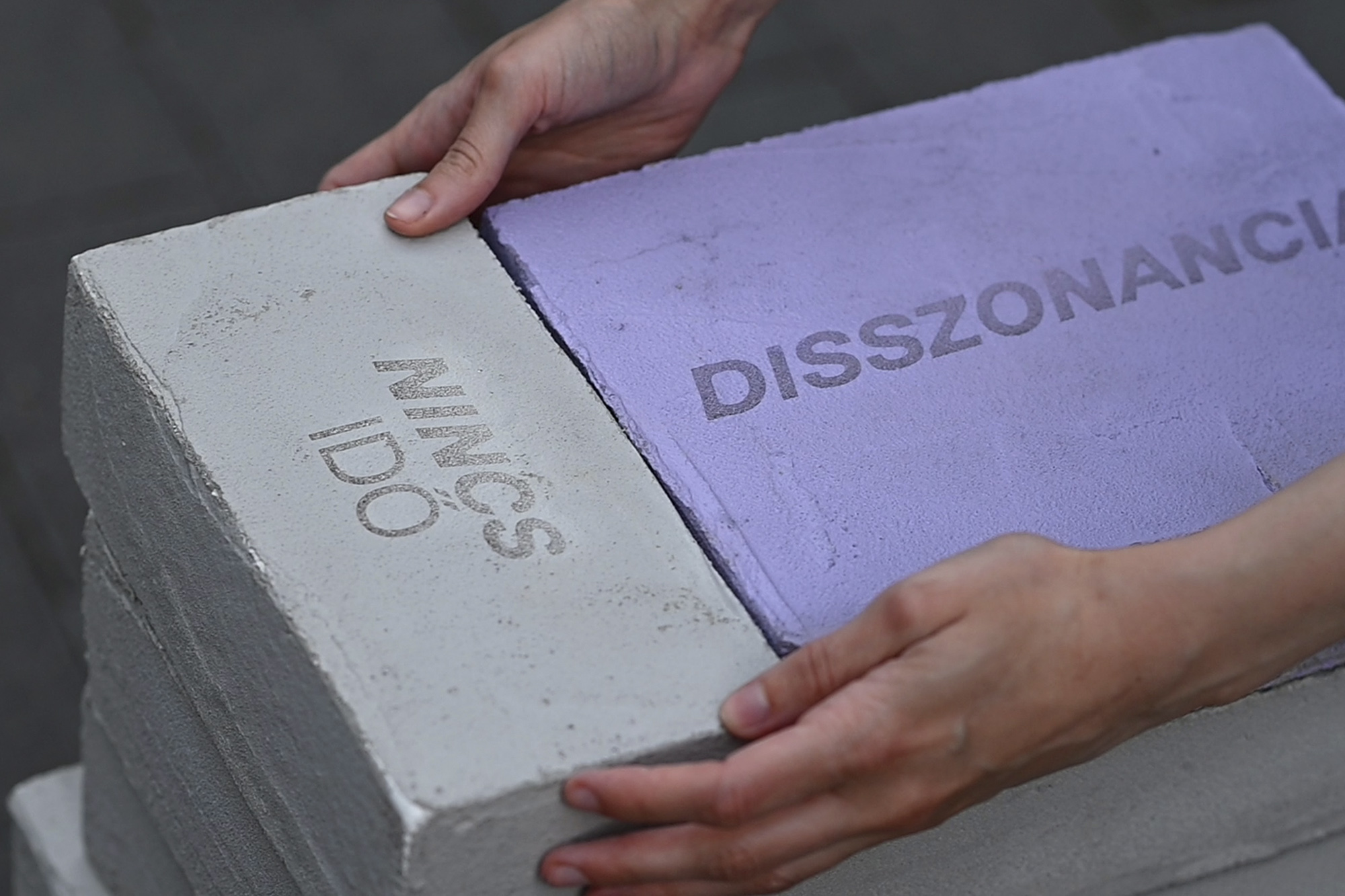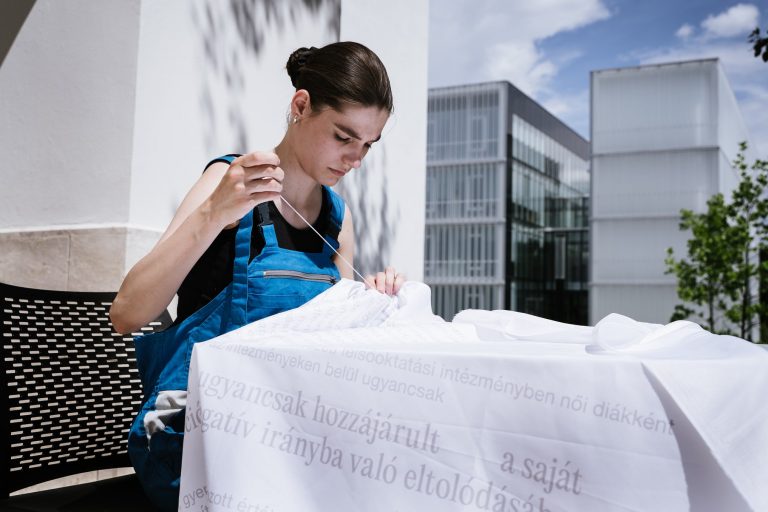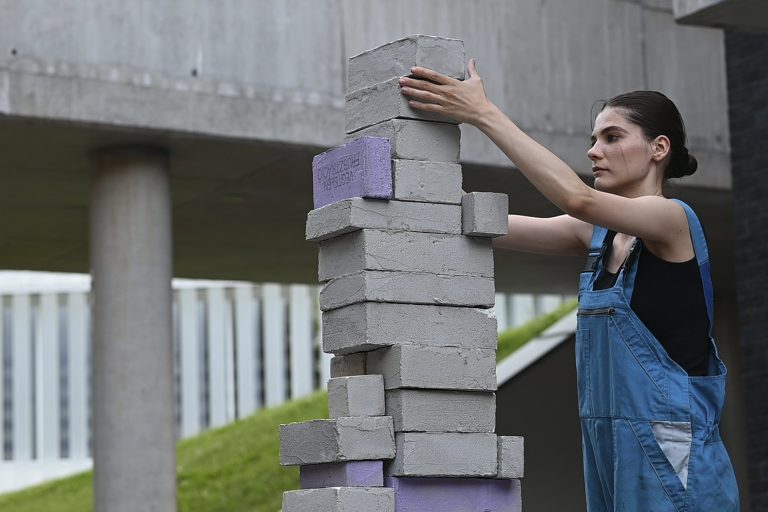

Wobbly positivity totem pole – Radical Optimism by Renáta Szabó
“Clearly, this profession is becoming dominated by women”, cried one of my male professors with a slightly puzzled expression as he was scanning our group consisting of young women only. We let it pass without much thought, the course went on, and a few years passed by. From time to time, personal experience from various higher education institutions and workplaces or other women’s stories brought this scene to mind, which felt like picking the scab on an accidentally sustained wound. It wasn’t particularly painful, but itchy enough to keep me involuntarily touching and curiously checking the raw patch of skin every now and then. I wonder what scar it would leave once healed? Renáta Szabó’s research-based diploma project Radical Optimism presents the psychological wounds of women starting their careers as a reflection on a prevalent social issue.

There is a grain of truth in what my professor once said. At Hungarian art education institutions, the radically inflated number of female students does exceed male students many times over — score one for feminists. As the distribution of sexes in Hungary seems to be evening out, the tirade about male dominance in the creative industries is getting outdated. Before we can sit back and relax, however, there are two questions we need to consider. One, whether the feminisation of certain jobs truly signals the rise of women’s rights or rather the gradual economic depreciation of certain care giving or teaching jobs. And two, why the increase in the number of female students is not directly proportional to the rise in the number of women in academia or female designers in senior positions. In her diploma research, Renáta specifically explored the career prospects of young women working in graphic design to find answers to the latter question.
“I was interested in trying to see my own future without illusions and the limits of my possibilities. I wanted to have a solid vision to be able to manage the debilitating frustration and uncertainty about the future, work, and career threatening to overwhelm me, and most probably the other students too.”

As underlined by Renáta herself, fear of the future typically experienced by career starters does not discriminate between genders, but unequal representation does. With young women, quarter-life crisis can turn into a suffocating existential anxiety at the career level that they can’t see themselves progress beyond, or in a life situation, such as starting a family that definitively excludes them from building a career.
“Many research studies argue that women in the more remote future will have a more powerful role in the graphic design and the design industry in general. However, there are just as many arguing against, claiming that the power balance between the sexes will become an issue.”
The constant struggle with uncertainty and the glass ceiling is reflected in the video performance recapping Renáta’s research. Her character turns up on the Campus of the Moholy-Nagy University of Art and Design wearing an oversized, masculine work uniform. With cold indifference and relentlessness, she starts stacking bricks bearing inscriptions of depressing feelings and thoughts. Bricks representing issues impacting women more directly appear larger and heavier. Cutaway shots of “Infinite frustration”, “Will I make less as a woman?”, “No kids”, “No time” and similar engravings follow one another in rapid succession, made up of letters designed by two renowned female graphic designers Charlotte Rhode and Laura Csocsán. The choice of subject and format recalls Renáta’s previous video project Wenchexploring the self-exploitation of female students pushing themselves to the limit. As a reference to the invisible work performed by women, her character in the video is consumed by the repetitive and exhausting activity of embroidering, traditionally considered feminine.
In comparison, the character in Radical Optimism, “a female graphic designer working non-stop” and stuck in a never-ending construction project is also a metaphor for the vertical segregation within the industry. Ironically enough, stacking is precisely the act that renders the doubts and insecurities forming the backbone of the tower impossible to read, suggesting that the only way to advance in our productivity-addicted society is to repress our most suffocating emotions. As the increasingly unstable positivity totem pole rises taller, she needs to reach her arms higher to reach the top. We can see her gradually run out of room to move, and when coming up against an invisible obstacle, methodically disassemble her work just to start the monotonous process of stacking – the never ending competition in an unlevel playing field – again and again with an unmoving expression.

Renáta’s artwork is in a sense like picking off the scab of wounds inflicted on women starting their careers, so the freshly stinging sensation can prompt a dialouge. Although it explores the situation of young women, by incorporating the general experience of career starters, Radical Optimism makes these experience all the more relatable, as if suggesting that solidarity with groups struggling with hardships and disadvantages is important because they are the first to show symptoms of a – for most of us – dysfunctional system.
// /
Renáta Szabó’s diploma project Radical Optimism was completed at the Graphic Design MA programme of Moholy-Nagy University of Art and Design, with Dóra Balla as her supervisor, and Bernadett Arndt as her consultant
The performance and video installation Wench was created as part of BRAWE in 2022. Collaborators: Auróra Community House, Bánkitó Festival, Eldem Art Space, Vaha, and Yort Books. Photo credit: Mátyás Czeglédi




